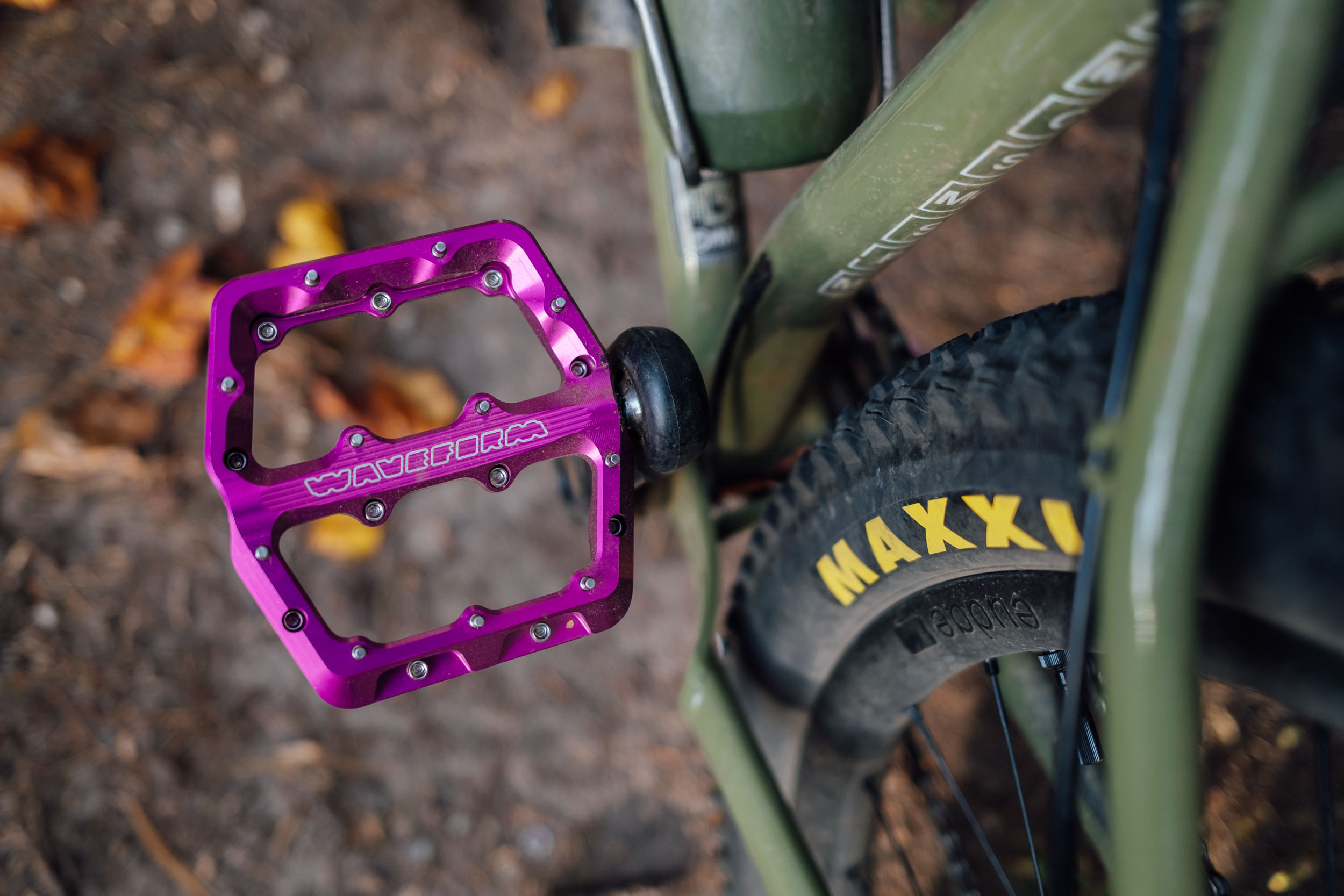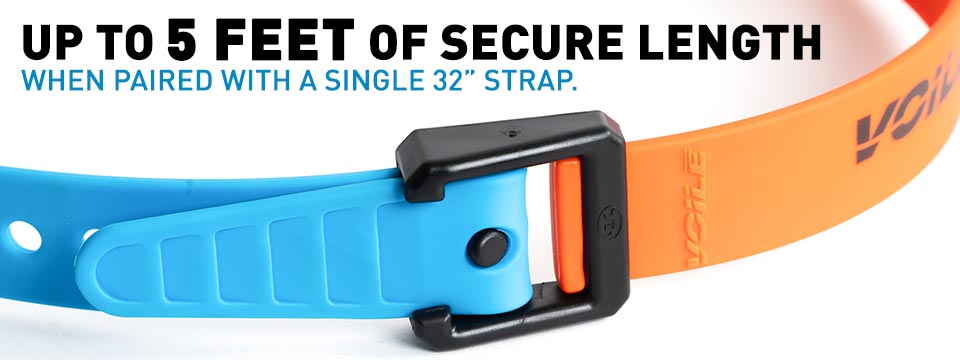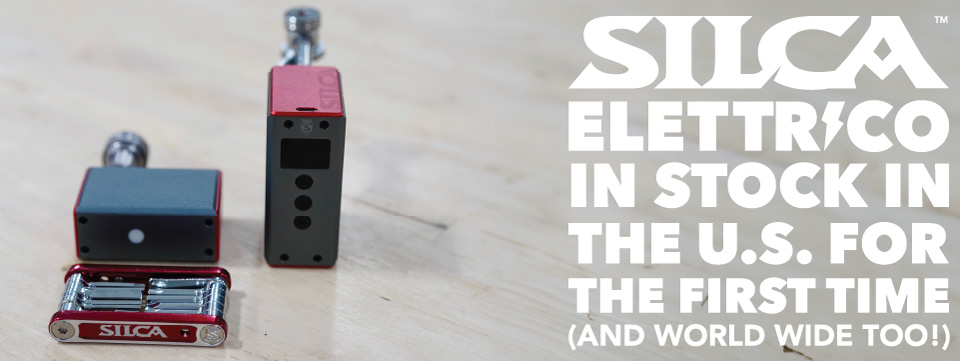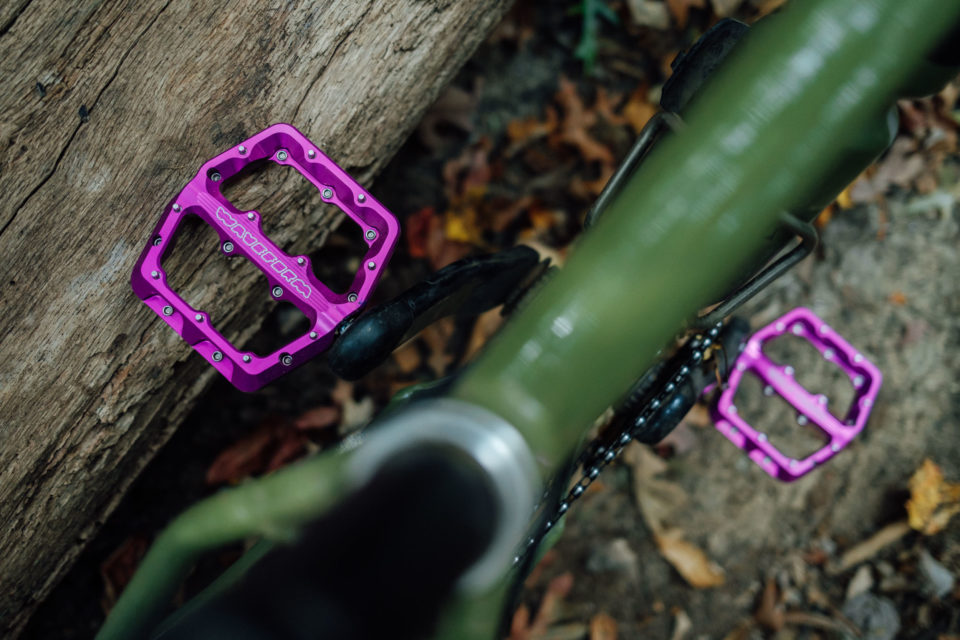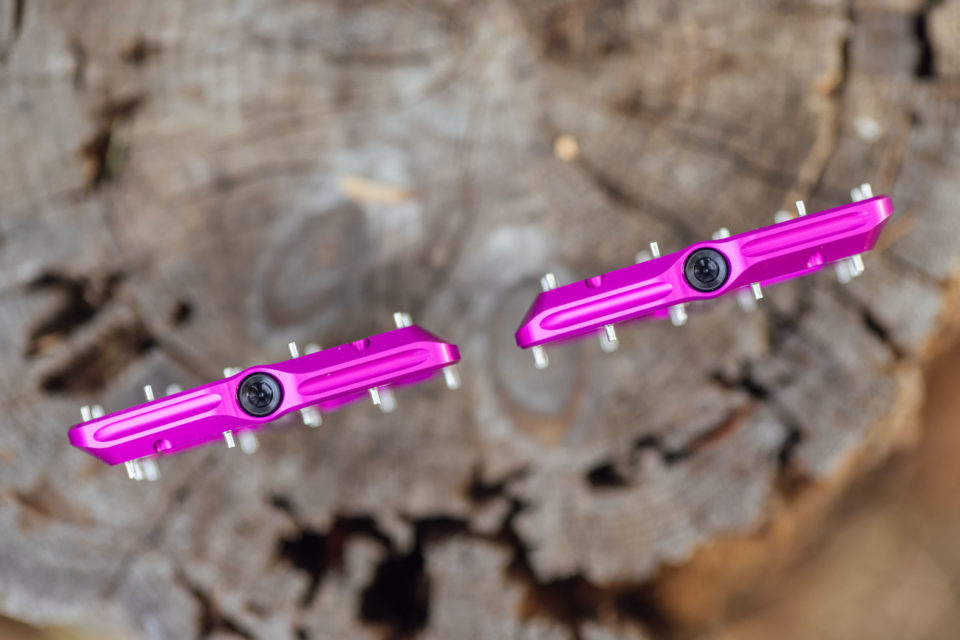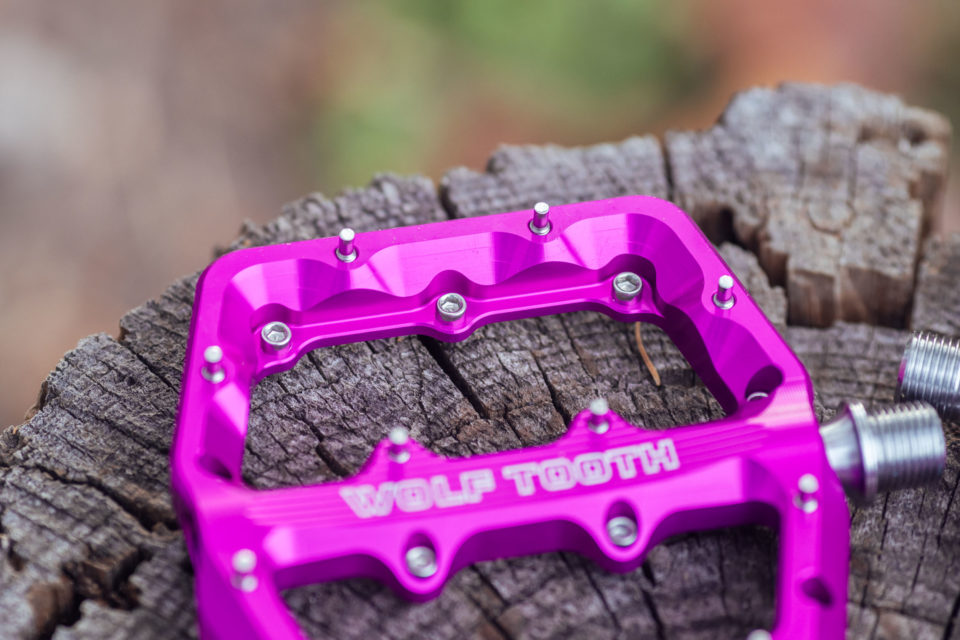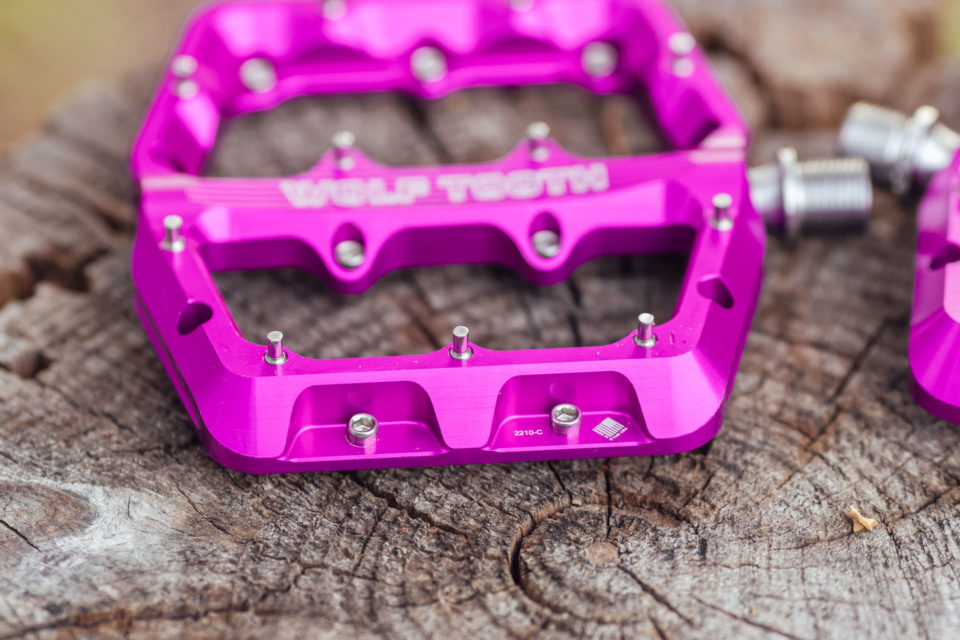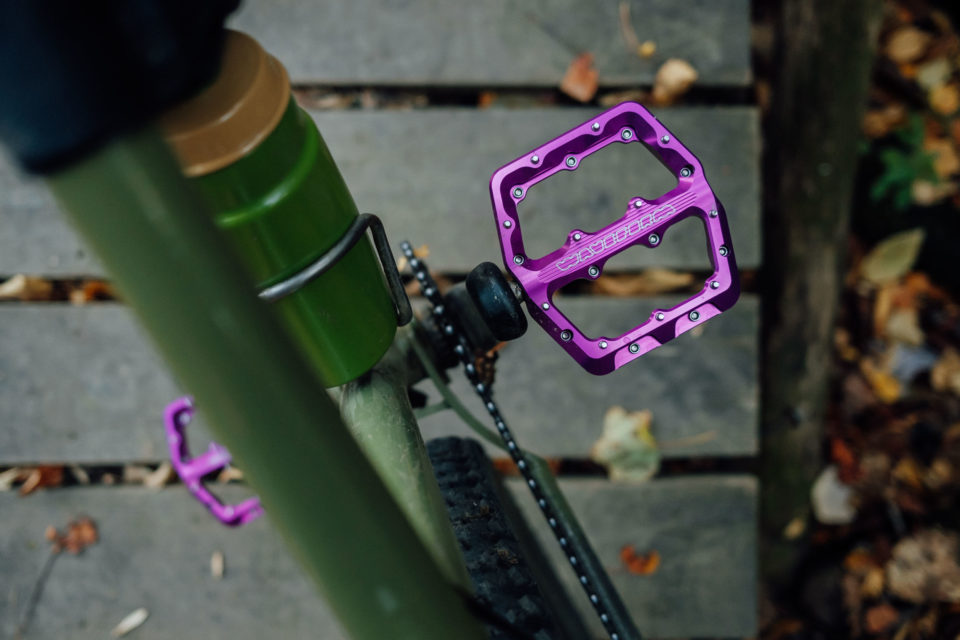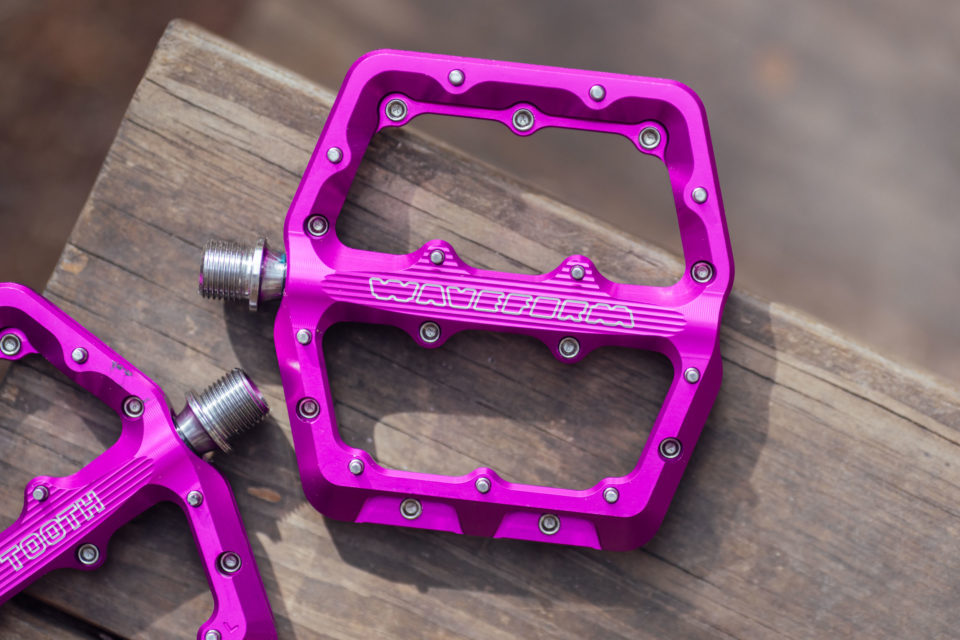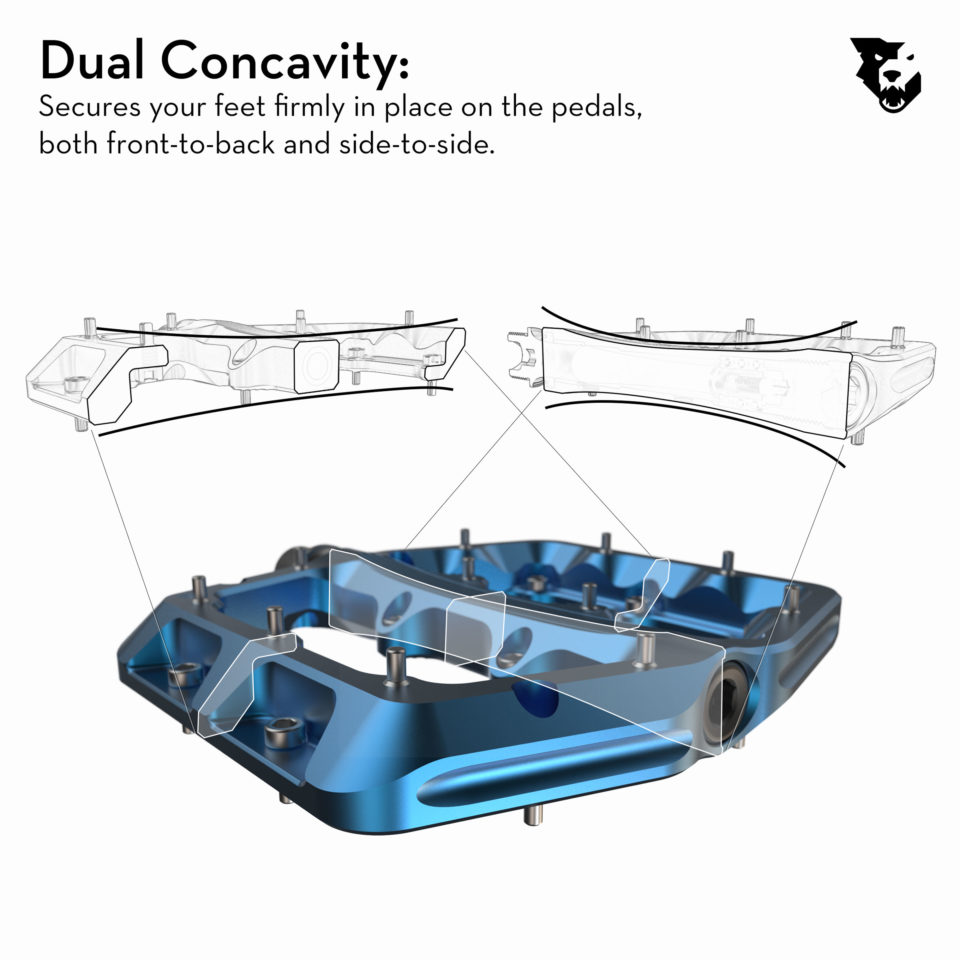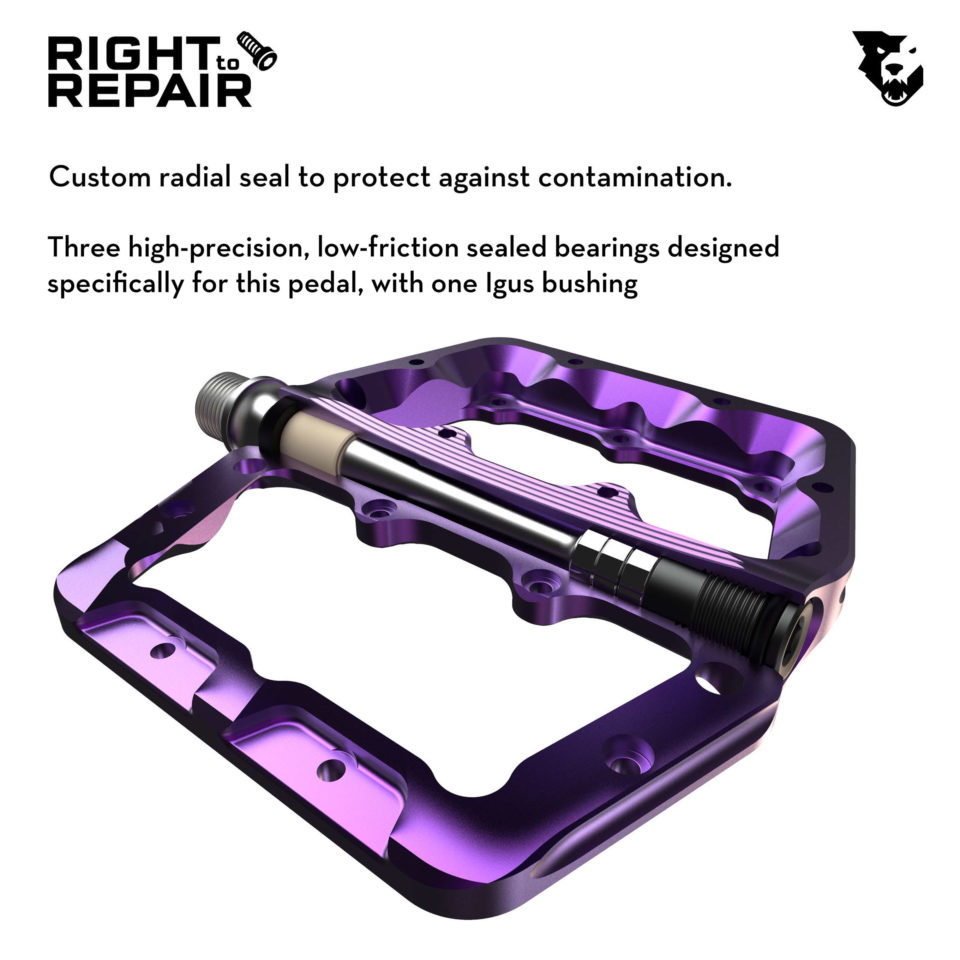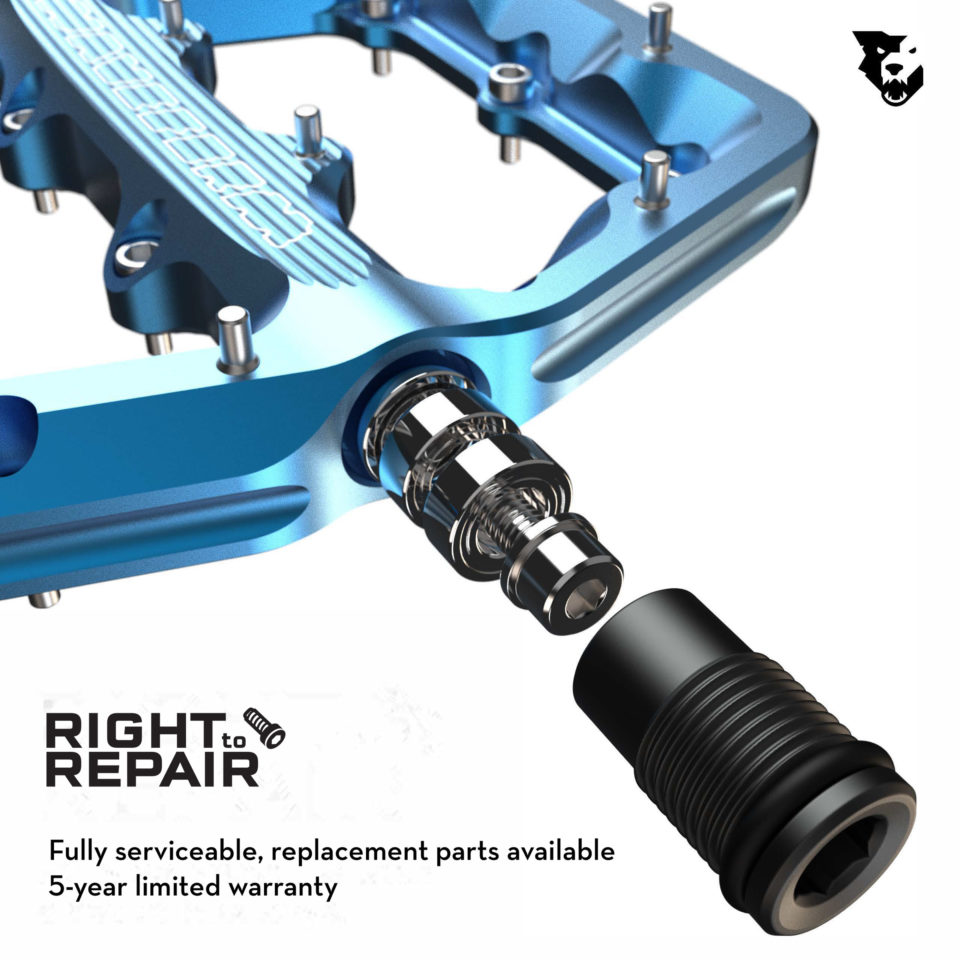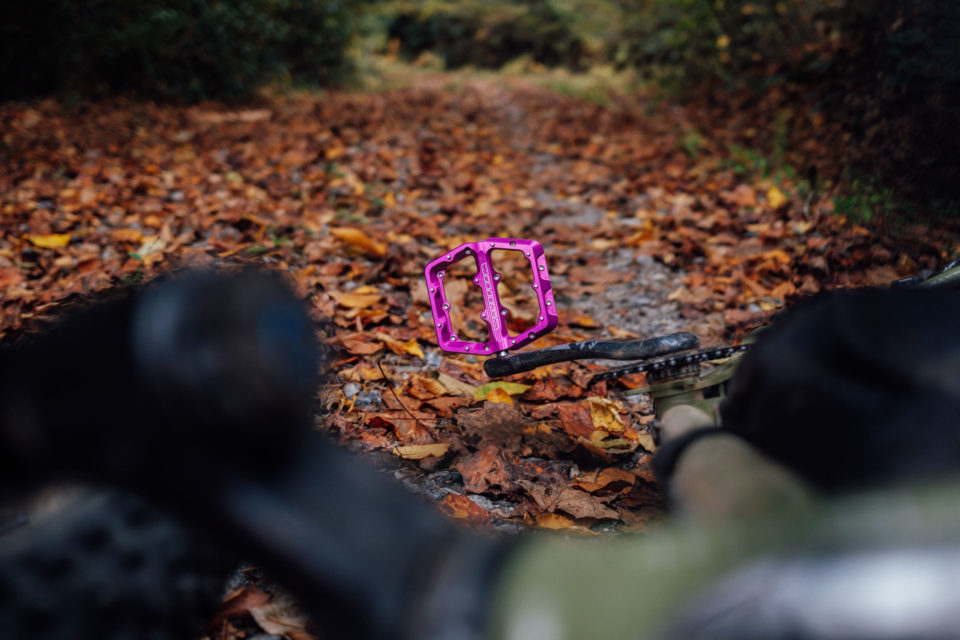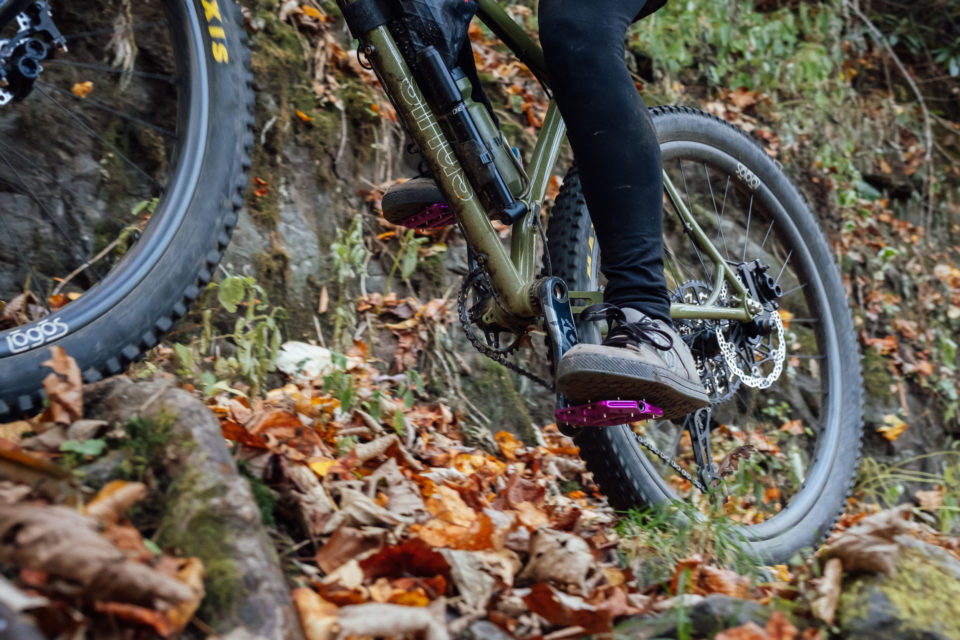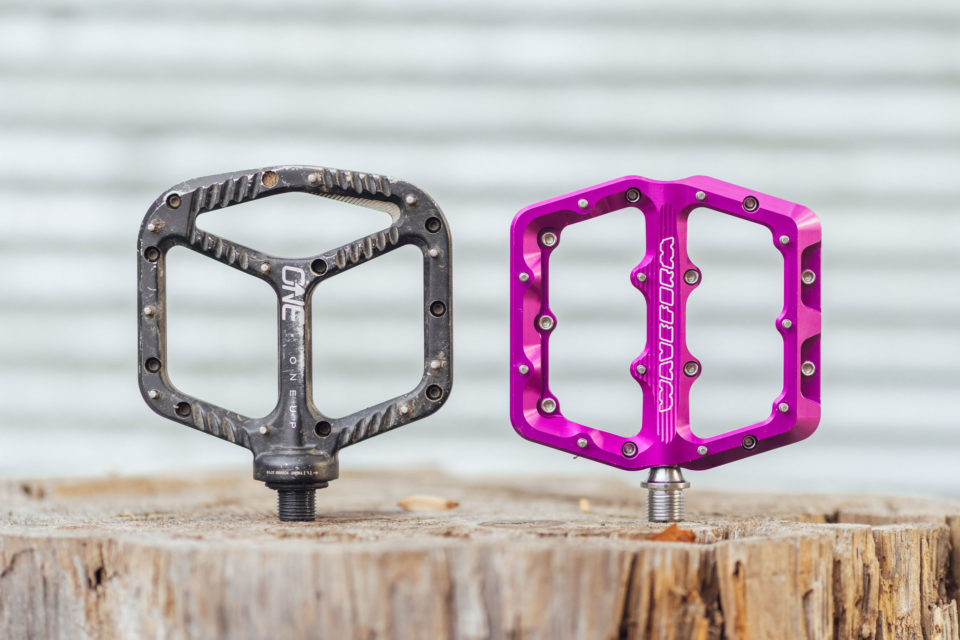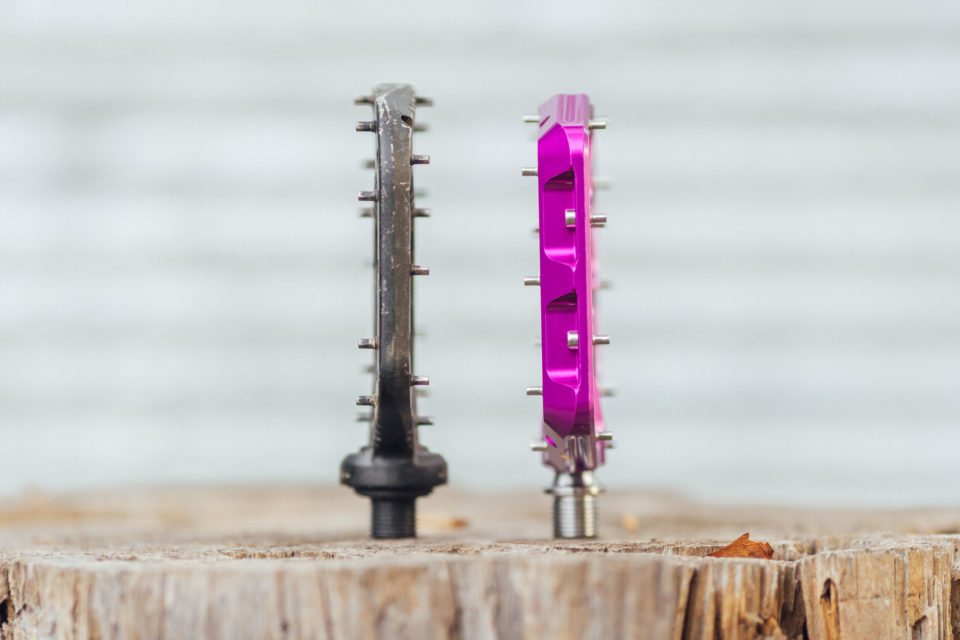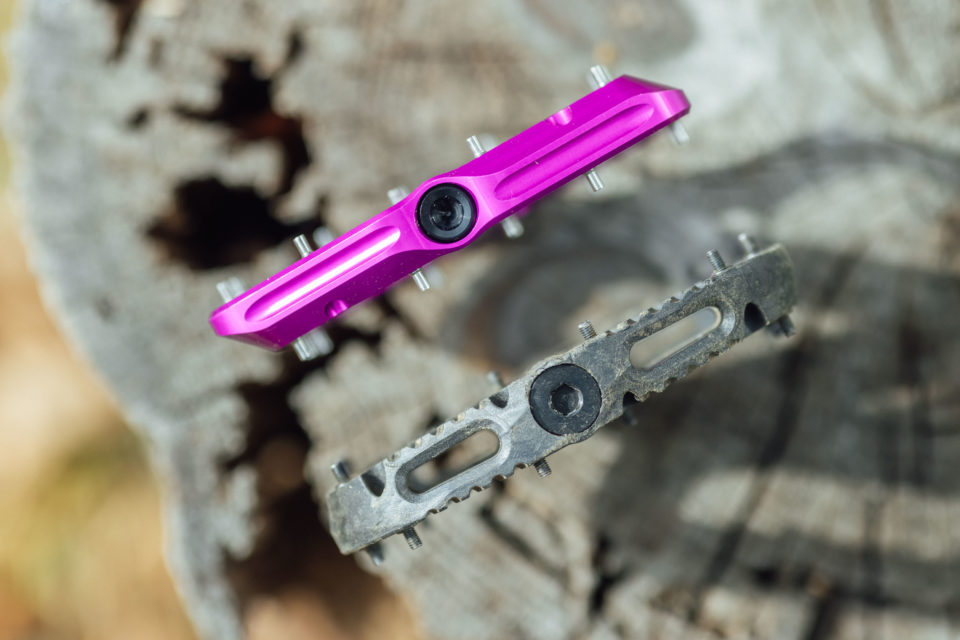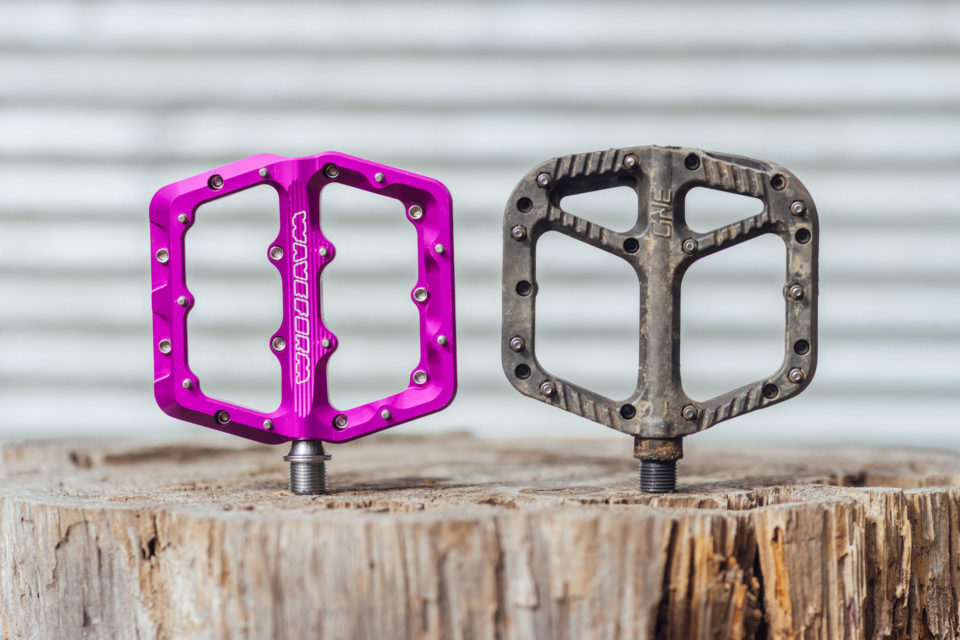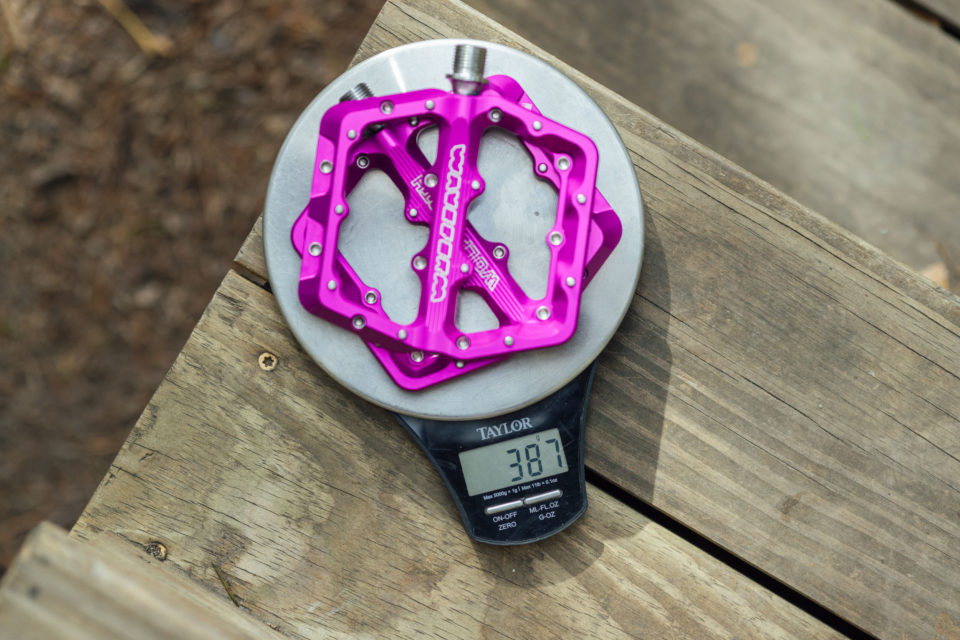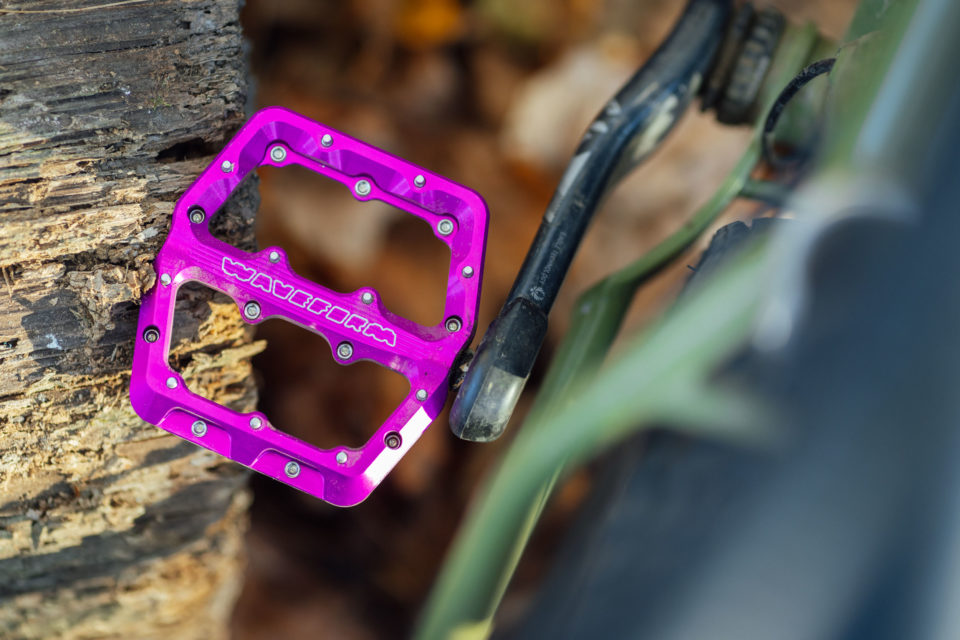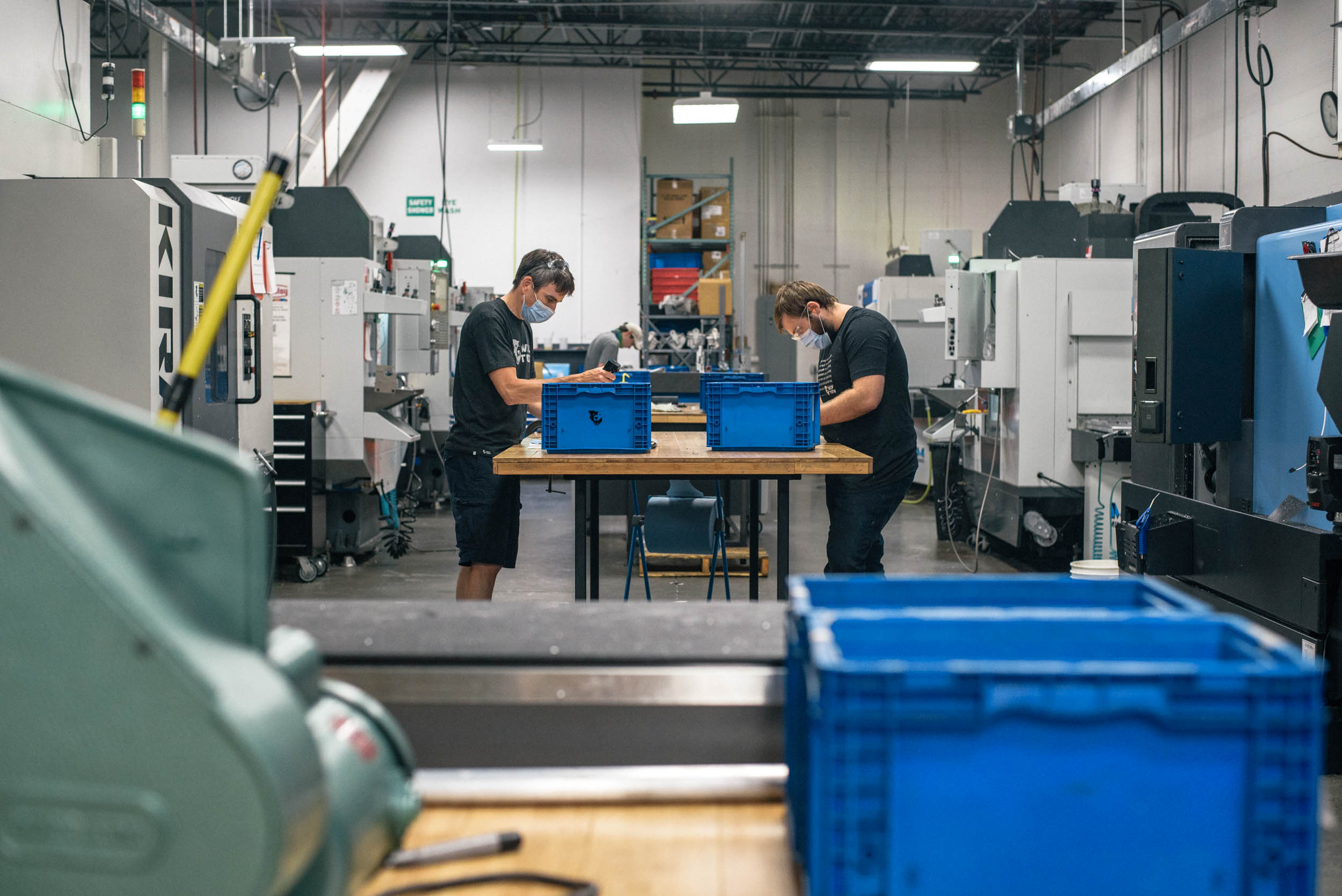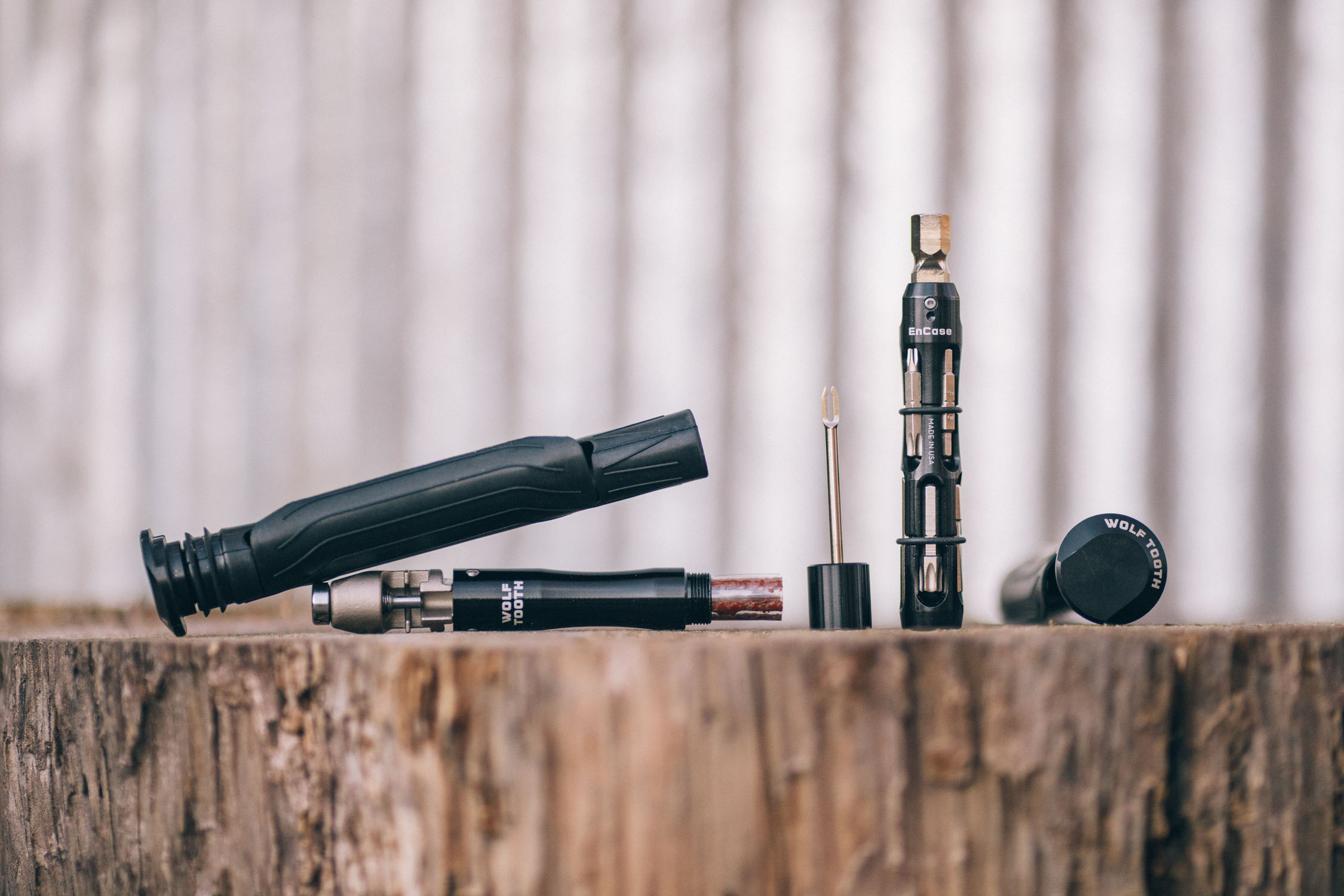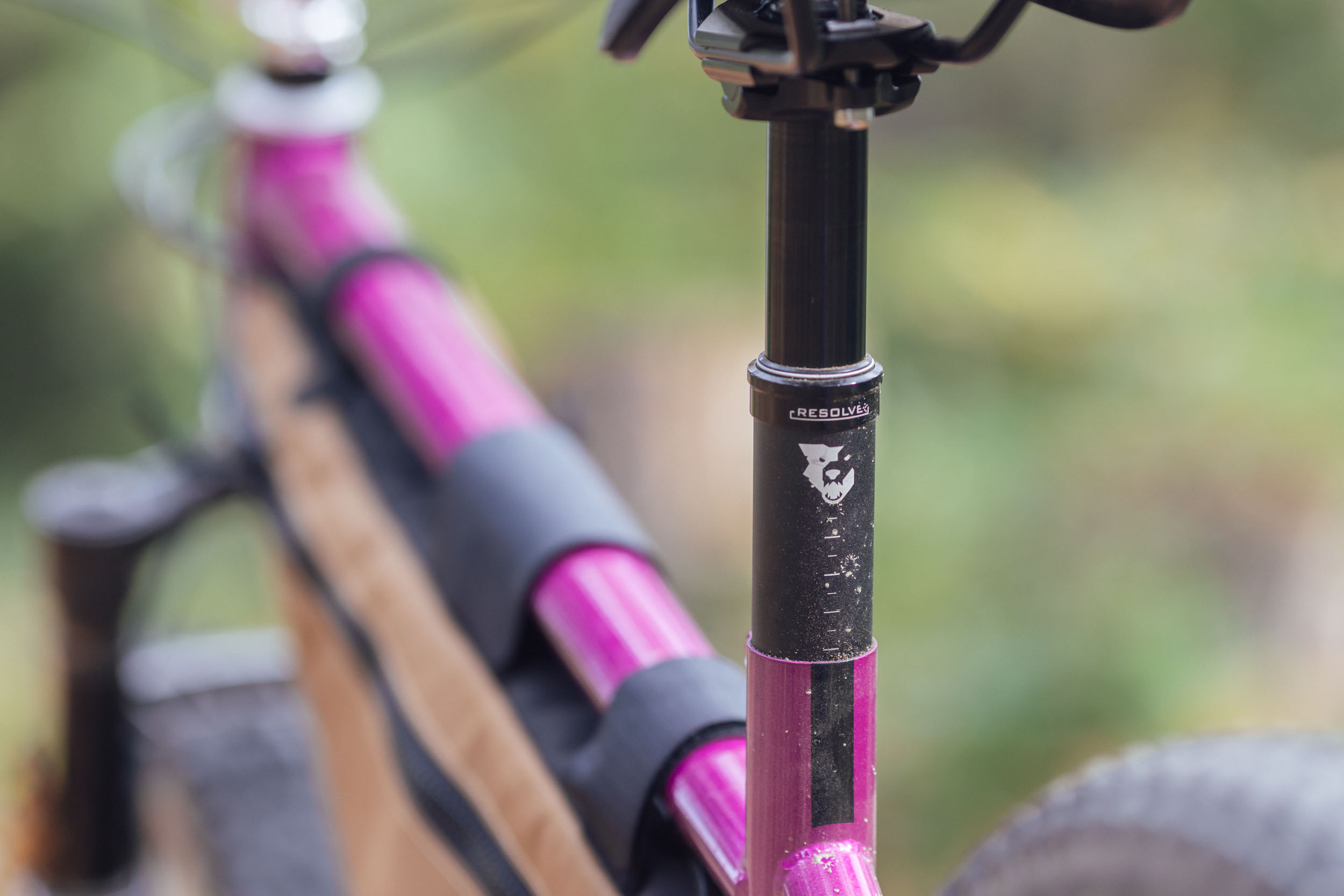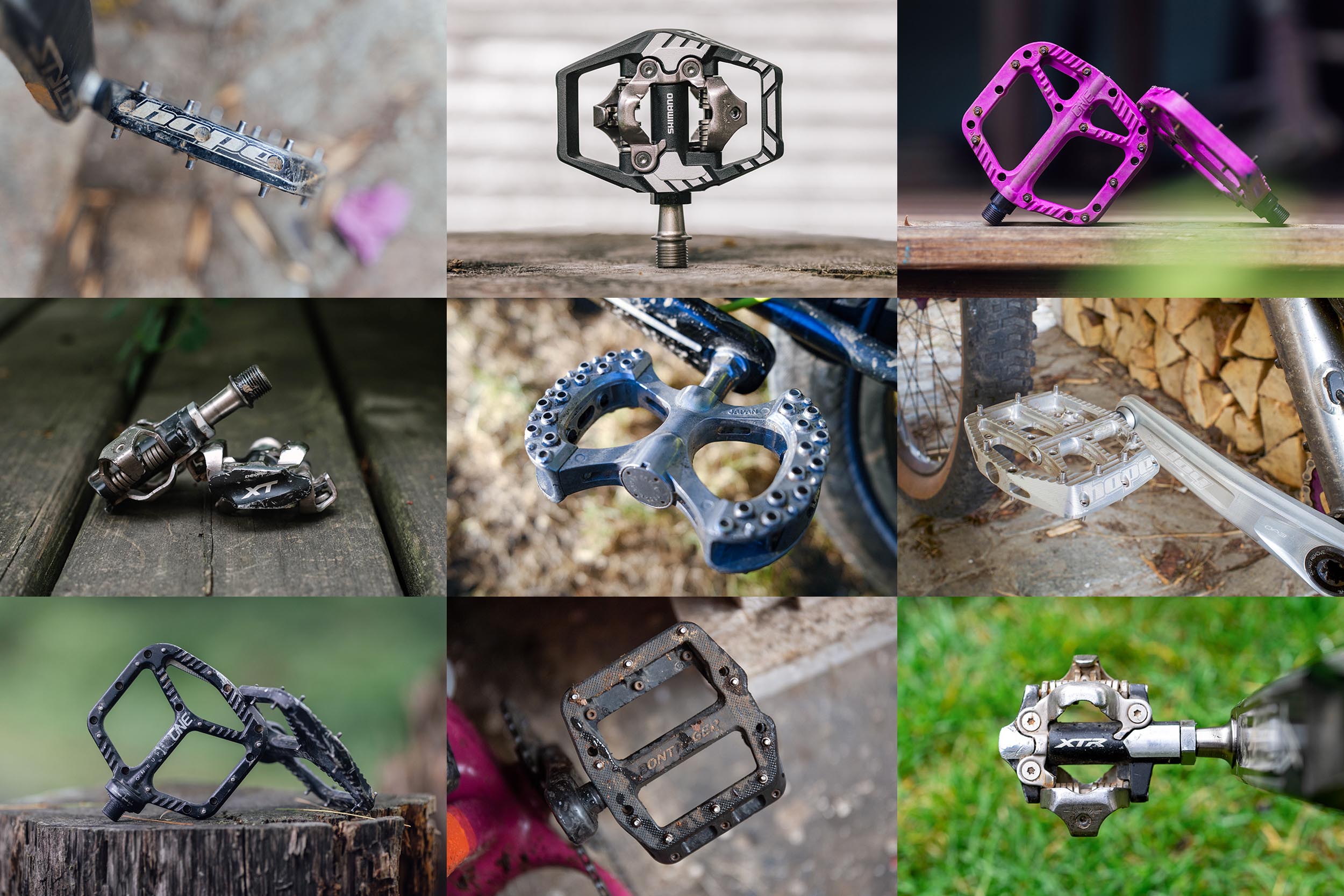Wolf Tooth Waveform Pedals Review
Just announced, the all-new Wolf Tooth Waveform pedals are made in Minnesota and feature an excellent dual-concave platform with a narrow Q-factor and ultra-grippy design. We’ve been spinning a pair around the chunky trails of Pisgah for several weeks, and you can read our review here…
PUBLISHED Oct 27, 2022
Aside from a few bikepacking trips abroad, I all but exclusively rode clipless pedals until a few years ago. A serious back injury and surgery in 2017 forced me to switch to flats, as severe nerve damage played hell on my ability to twist my right foot and release the cleat from an SPD mechanism. That nerve issue has since abated, for the most part, but I’ve remained a platform pedal convert. Flat pedals are not only more user-friendly for bikepacking, but I’ve found them to be more engaging—no pun intended—while trail mountain biking.
It’s taken some getting used to, but I ultimately feel like they’ve advanced my riding skills and they offer more of a connection to the feel of the bike and the trails. That said, it didn’t come easy. There were lots of oh shit! moments with pedals rolling underfoot while airborne and feet coming unglued while bounding down rocky descents. The learning curve included figuring out a proper riding style as well as finding the flat pedals and shoes that deliver adequate grip. The latter proved even more challenging since fast and semi-aggressive riding on rocky and rooty singletrack (on a hardtail) is what I love most.
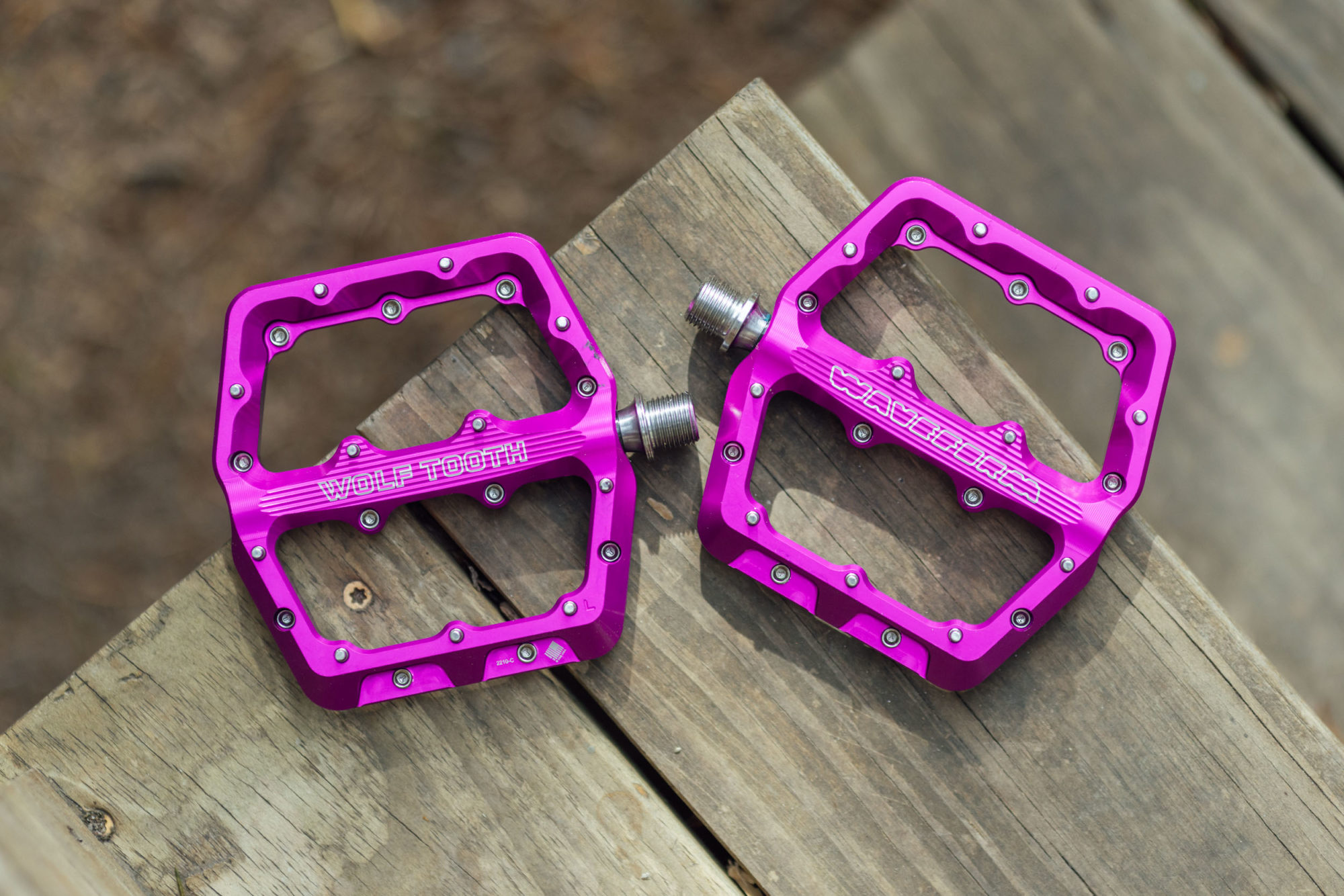
I’ve experimented with dozens of pedals and shoes and only discovered a few that have worked really well for me. As I mentioned in our recent Editor’s Favorites roundup, the OneUp Composites have been my go-to pedal for a while. But when I got the new Wolf Tooth Waveform pedals to try out, I wondered whether there might be a new sheriff in town. They share a similar shape and profile to the OneUps with a few interesting differences. Read on for a comparison and a full review after taking them on dozens of rugged trail rides around Pisgah National Forest.
What’s a Waveform?
In summary, the Wolf Tooth Waveform is an aluminum flat pedal that comes in four colors and two sizes: small (105 x 99mm) and large (112 x 106mm). Waveform pedals have 22 stainless steel rear-loading grip pins (11 on each side), and their aluminum bodies spin on stainless steel axles using one inboard Igus bushing and three outboard custom cartridge bearings. All pedal components are available as replacement parts via Wolf Tooth’s relatively new Right to Repair program. If someone wanted to, they could buy all the parts individually and assemble the pedals themselves with the instructions they provide. But, as Wolf Tooth’s Marketing Manager Kurt Stafki explained, “We recommend not doing that, but it shows that all pieces can be repaired or replaced without needing to replace an entire set of pedals.”
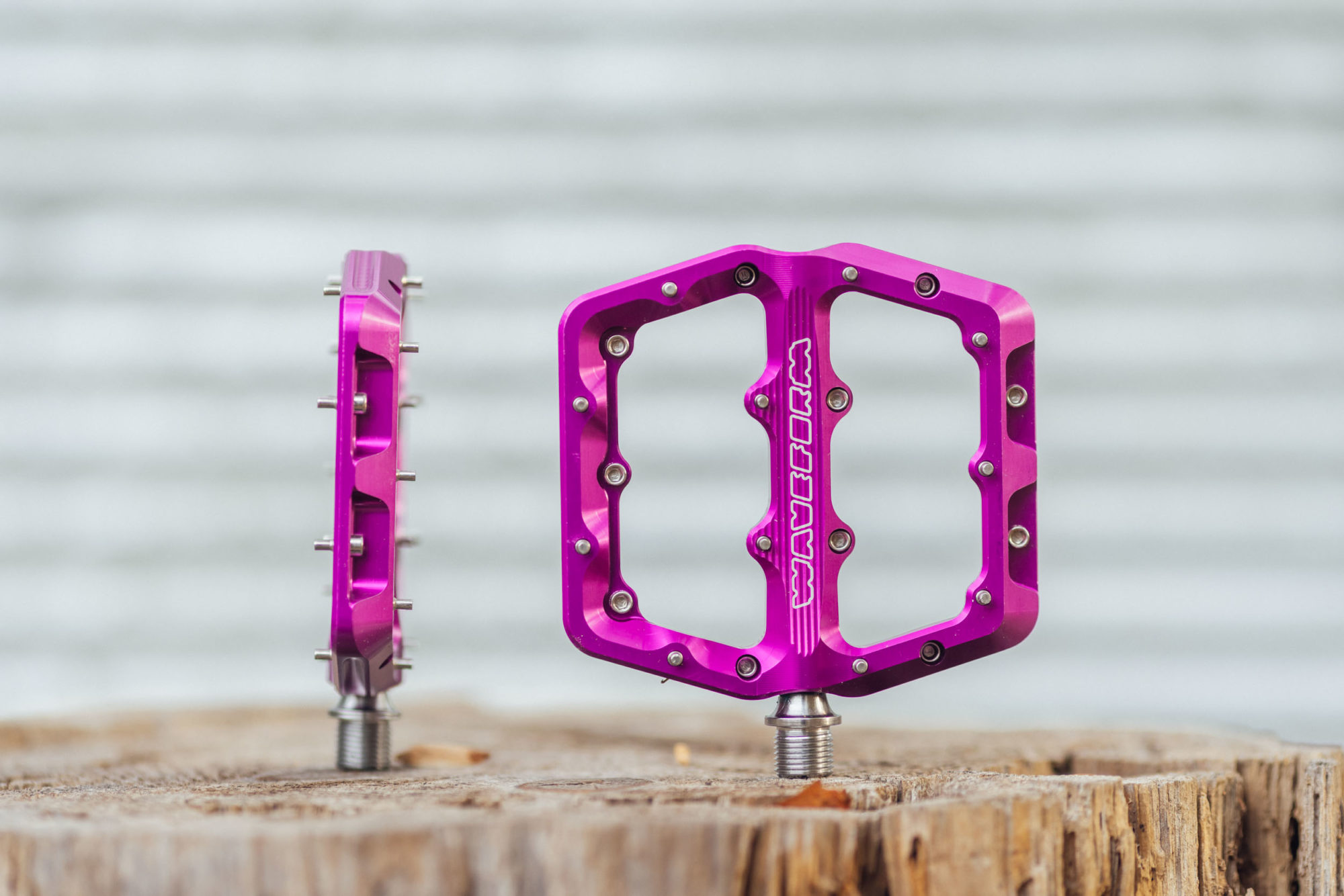
The Waveform pedals are designed, beautifully machined, and assembled in Wolf Tooth Components’ Minnesota facility. The pedal bodies are CNC milled in-house from 6061-T6 aluminum—machined on the same mills that make their chainrings and multi-tools. The 17-4 PH stainless steel axles come from the same lathes that make Wolf Tooth headsets and seatpost clamps.
When I asked why Wolf Tooth decided to get into the pedal game amid an already saturated market, Kurt responded, “Because we couldn’t find a quality flat pedal that ticked all the boxes. We wanted to make something at the intersection of form and function. So, we wrote down all the features that we need in a pedal and spent a lot of time on the aesthetics. The result is a pedal that meets our performance expectations, looks great, and is 100% serviceable at home.”
It looks great, alright. The pedal is beautifully machined with nice curves and elegant lines. That includes the inside chamfers of the front of the pedals (above-left), which emulate a sine wave—the pedal’s namesake—a pattern that naturally occurs in sound waves, light waves, and even wind. The retro bubble font adds a nice touch as well.
Concave Innovation?
As noted in my review of their new Resolve dropper post last week, Wolf Tooth has been on a tear with new products lately. I’m always excited to see their fresh interpretations of components and learn what new innovations they weave into them. And while it’s hard to imagine there’s much new to add to flat pedals, the new Wolf Tooth Waveform manages to bring a couple of interesting tricks to the table.
Perhaps the most interesting innovation is the pedal’s dual-concave design. Concave “flat” pedals are nothing new, and the Wolf Tooth Waveform pedals aren’t the only dual-concave pedals on the market, but they’re among a select few—the DMR Vault are probably the most popular. And some other “dual-concave” pedals only have shorter pins in the center. Waveform Aluminum Pedals have a pedal body that is machined to be thinner in the center than the perimeter, which means they’re dual-concave regardless of pins. As you can see in the illustrations above, the aluminum pedal body has a concave profile both front to back and side to side. The center of the pedals is 12.5mm thick while the perimeter is 14mm thick. The pins in the center of the Waveform pedals are also set lower than the pins on the perimeter, making them even more concave.
On the Trail + Waveform vs. OneUp
The idea behind flat pedals that use a concave shape is that it theoretically allows your shoe sole to sink into the center of the pedal, further engaging the outer pins and allowing the pedal to cup your shoe, thus providing more grip. Considering that two of my favorite pedals—OneUp Composite and OneUp Alloy—have a convex shape, I haven’t given the convex vs. concave debate much thought. However, on the first ride with the Waveforms, it was pretty clear that Wolf Tooth (as well as several other companies) might be onto something.
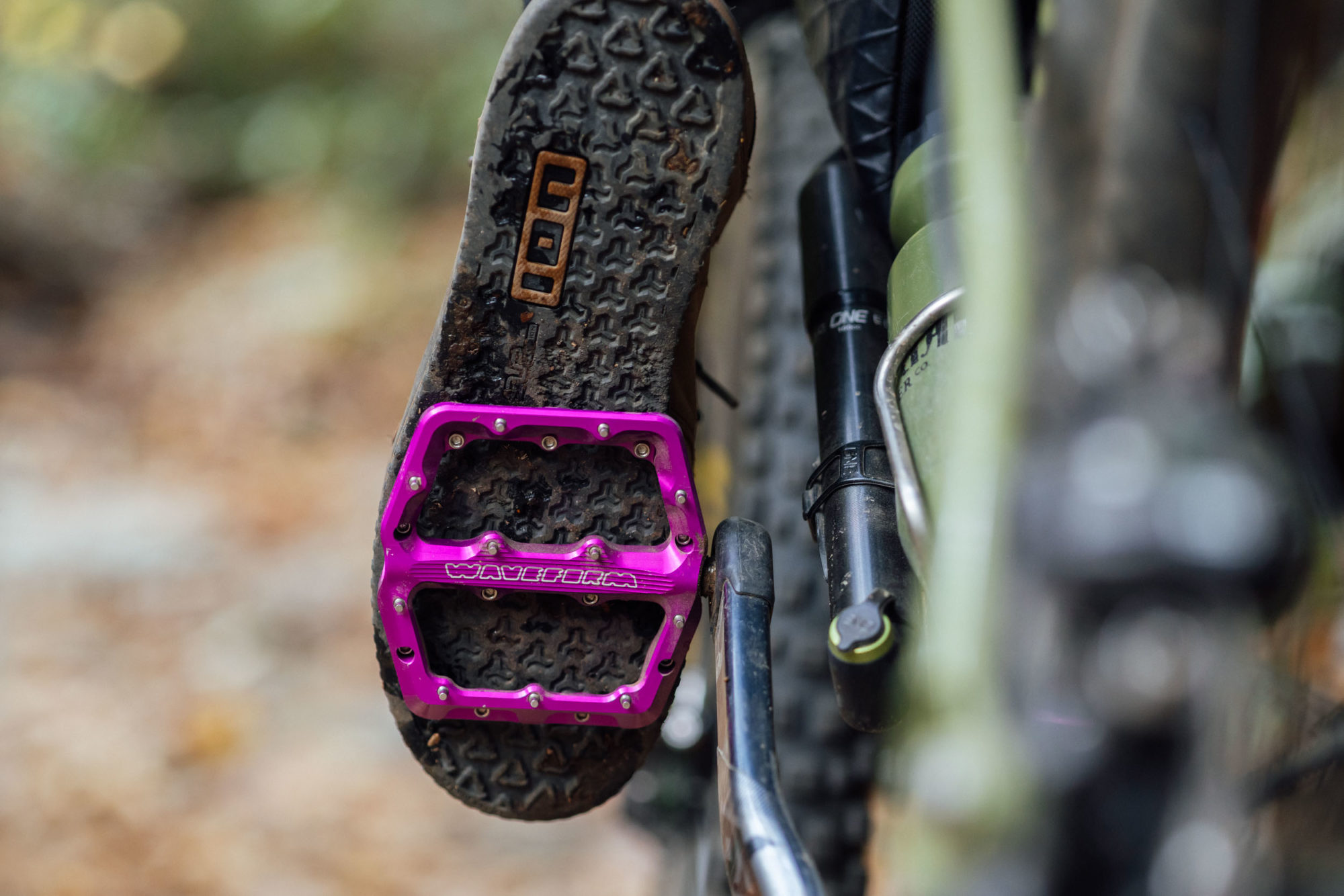
Generally, the Waveform has about the same size platform as both the Composite and Alloy versions of the OneUp pedals—the Oneups have a 115x105mm platform and the large Waveform has a 112 x 106mm platform. They feel about the same in that regard, both perfectly fitting my size 10 Ion shoe. That leads me to one hidden benefit (or detriment, depending) that Wolf Tooth doesn’t mention. The Waveform offers a narrower Q-factor than many other pedals, including both OneUps. The Waveform has about 5mm less distance between the flat surface that stops the threaded axle against the crankarm and the outer pins. While that doesn’t seem like much, I had to mindfully move my feet inward and adjust my stance to be sure I wasn’t missing those pins during the first few rides. Perhaps it was muscle memory from the thousands of miles I’ve pedaled the OneUps, but it was definitely noticeable. Even when I did have off alignment, they were still plenty grippy, as illustrated below. I got used to moving my feet inward after a while, and it might ultimately be beneficial for the old knees.
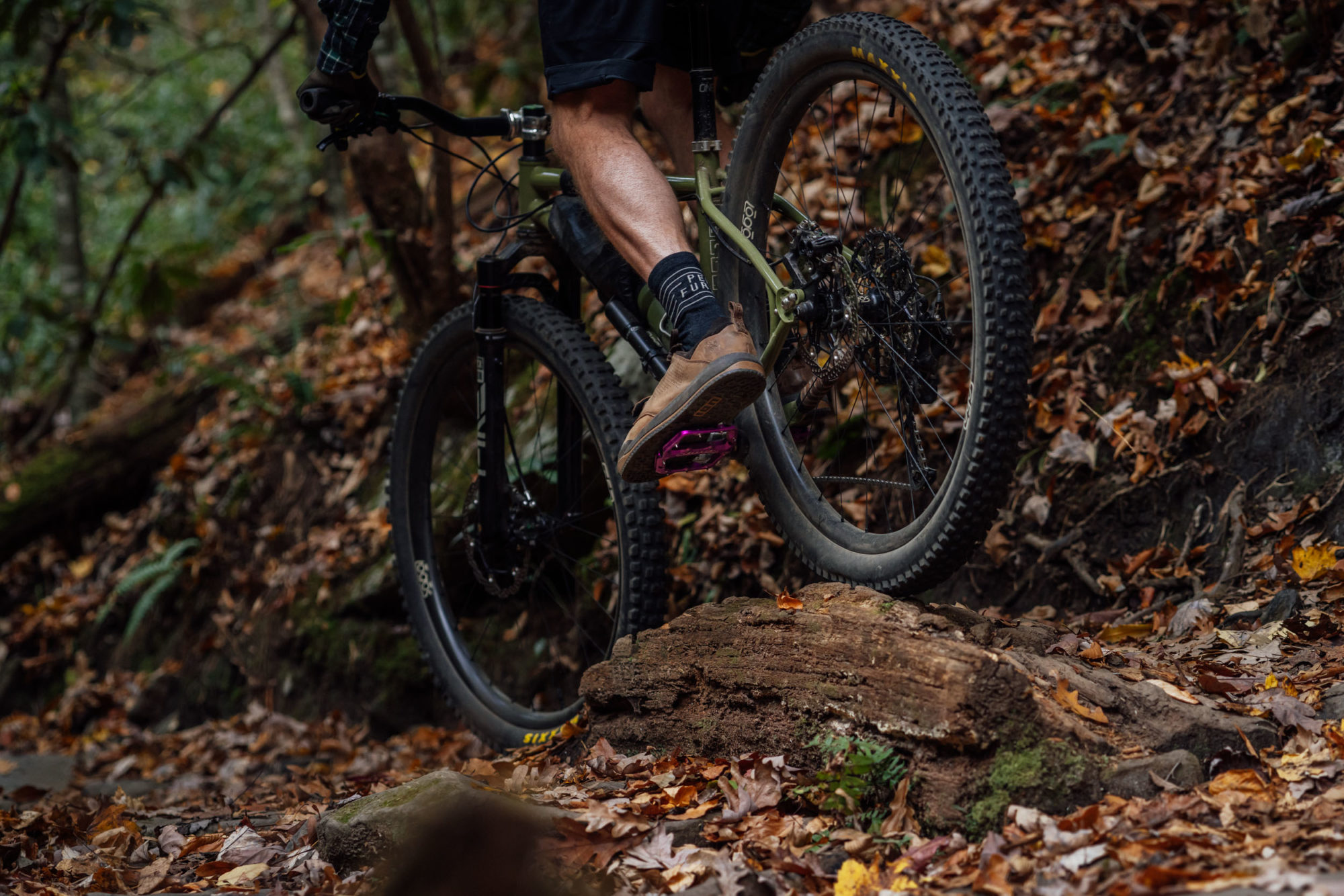
Another difference is the platform thickness. Just a couple of years ago, flat pedals were being released in droves, each trying to outdo the other with the thinnest platforms. OneUp Alloys were one of those. As you can see in these photos below, the Alloys are indeed thinner than the Waveforms, but the OneUp composites are a couple of millimeters thicker. However, Wolf Tooth did a good job angling the leading-bottom edge of the Waveforms, and they aren’t overly thick by any means.
Going back to the grip comparison, I used my Ion shoes—one of my favorites for both grip and positioning—in a side-by-side test between the composites and the Waveforms. I ultimately found that the Waveforms bested the OneUps in the grip department. Mind you, they’re slightly more difficult to reposition your foot on as a result, but not overly so. It’s hard to say whether their excellent grip is owed to the concave shape of the Waveforms, the pin placement, or the fact that the Waveforms have one more pin on each side than the OneUps. Either way, they’ve quickly become my favorites for trail riding.
- Model/Size Tested: Large, Ultraviolet Purple
- Actual Weight: 387 grams (pair)
- Place of Manufacture: Minnesota, USA
- Price: $199.95 at Wolf Tooth
- Manufacturer’s Details: WolftoothComponents.com
Pros
- Extremely grippy pedals from pin placement, shape, and perhaps the dual-concave design
- Beautifully made in-house in Minnesota
- Have a narrower Q-factor than other pedals I’ve used
- Self-serviceable
Cons
- Relatively expensive
- Custom bearings would be hard to replace if need be while traveling abroad
- No cheaper composite version, yet
Wrap Up
I’ve ultimately pedaled the Wolf Tooth Waveform Pedals on over a dozen rugged trail rides around Pisgah and have been extremely impressed with their performance. As mentioned, they bested my previous favorite pedals in the grip category. I’m not sure whether to attribute that to the interesting dual-concave design or the pin placement, but it’s impressive. They’re also the perfect fit for my size 10 shoes and are beautifully designed. All that said, they’re relatively expensive. But if you live in the US and are willing to pay a little more for a product that’s made locally, they may well be worth it. And if they end up proving themselves as reliable as I hope, that’s a win-win. I’ll be sure to update this review after 1,000 or so miles.
Related Content
Make sure to dig into these related articles for more info...
Please keep the conversation civil, constructive, and inclusive, or your comment will be removed.







